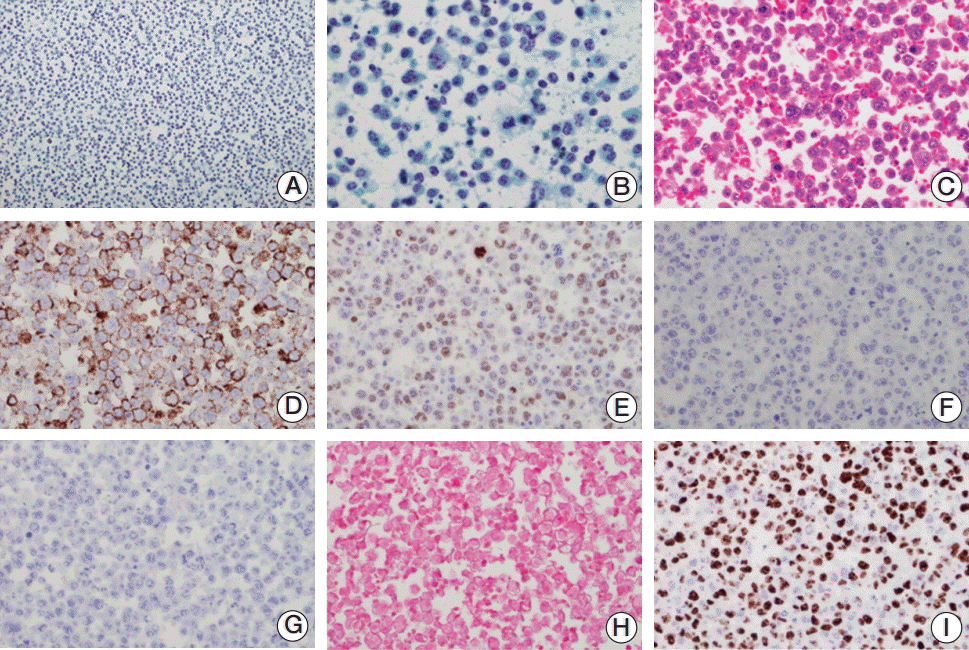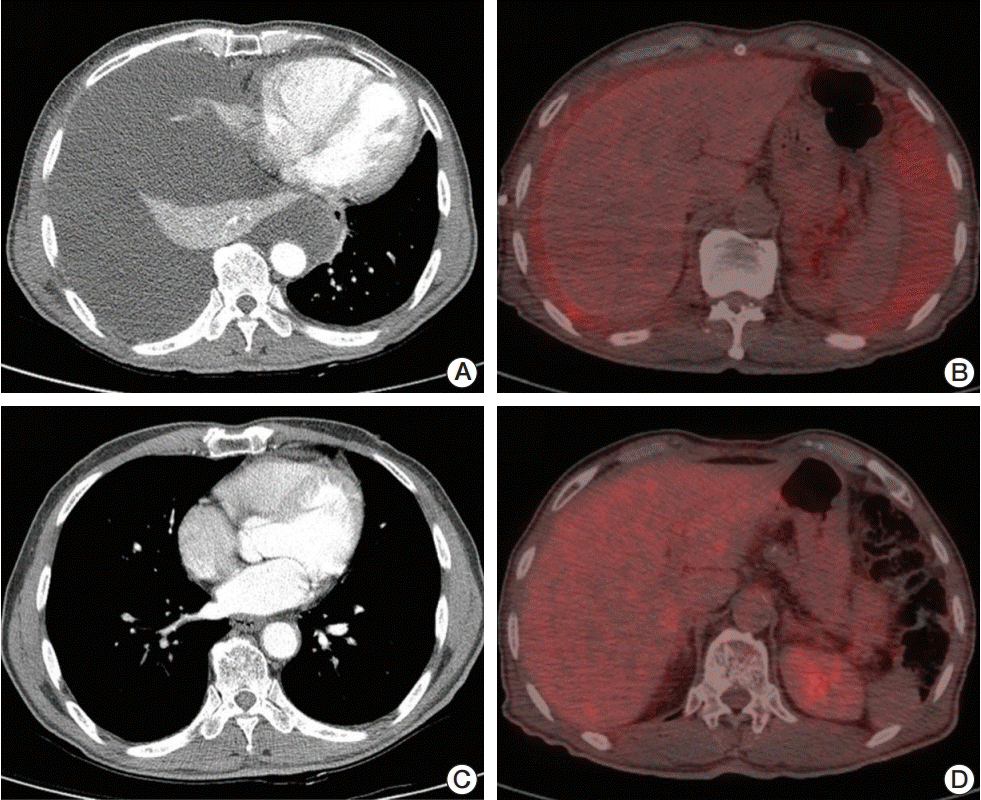1. Chen YB, Rahemtullah A, Hochberg E. Primary effusion lymphoma. Oncologist. 2007; 12:569–76.

2. Little RF, Gutierrez M, Jaffe ES, Pau A, Horne M, Wilson W. HIV-associated non-Hodgkin lymphoma: incidence, presentation, and prognosis. JAMA. 2001; 285:1880–5.
3. Wang HY, Fuda FS, Chen W, Karandikar NJ. Notch1 in primary effusion lymphoma: a clinicopathological study. Mod Pathol. 2010; 23:773–80.

4. Carbone A, Gloghini A. PEL and HHV8-unrelated effusion lymphomas: classification and diagnosis. Cancer. 2008; 114:225–7.
5. Alexanian S, Said J, Lones M, Pullarkat ST. KSHV/HHV8-negative effusion-based lymphoma, a distinct entity associated with fluid overload states. Am J Surg Pathol. 2013; 37:241–9.

6. Mohammad F, Siddique MN, Siddiqui F, Popalzai M, Asgari M, Odaimi M. A unique case of malignant pleuropericardial effusion: HHV-8-unrelated PEL-like lymphoma: a case report and review of the literature. Case Rep Oncol Med. 2014; 2014:436821.
7. Fan HB, Yang DL, Guo Y, Chen AS, Zhou MX, Wu JJ, et al. Human herpes virus 8-unrelated primary effusion lymphoma-like lymphoma in a patient with hepatitis B virus-related liver cirrhosis: a case report. J Res Med Sci. 2014; 19:190–2.
8. Kashiwagi T, Minagawa K, Kawano H, Hirata T, Kashiwagi S, Nakagawa Y, et al. HIV-negative, HHV-8-unrelated primary effusion lymphoma-like lymphoma with genotypic infidelity and c-MYC expression. Ann Hematol. 2014; 93:1609–10.

9. Nador RG, Cesarman E, Chadburn A, Dawson DB, Ansari MQ, Sald J, et al. Primary effusion lymphoma: a distinct clinicopathologic entity associated with the Kaposi's sarcoma-associated herpes virus. Blood. 1996; 88:645–56.

10. Okada S, Goto H, Yotsumoto M. Current status of treatment for primary effusion lymphoma. Intractable Rare Dis Res. 2014; 3:65–74.

11. Castillo JJ, Shum H, Lahijani M, Winer ES, Butera JN. Prognosis in primary effusion lymphoma is associated with the number of body cavities involved. Leuk Lymphoma. 2012; 53:2378–82.

12. Toyoda K, Abe Y, Tsuda M, Haji S, Choi I, Suehiro Y, et al. Successful treatment with oral low-dose sobuzoxane and etoposide combined with rituximab in an elderly patient with HHV-8-negative primary effusion lymphoma-like lymphoma. Rinsho Ketsueki. 2014; 55:815–9.
13. Wu W, Youm W, Rezk SA, Zhao X. Human herpesvirus 8-unrelated primary effusion lymphoma-like lymphoma: report of a rare case and review of 54 cases in the literature. Am J Clin Pathol. 2013; 140:258–73.
14. Wu W, Liu J, Hong W. Human herpes virus 8-unrelated primary effusion lymphoma-like lymphoma diagnosed by fluorodeoxyglucose positron emission tomography/computer tomography and laparoscopy. Oncol Lett. 2014; 7:433–4.

15. Kim KH, Lee JH, Jeong HC, Kim GW, Song SH, Jung SY, et al. A case of human herpes virus-8 unrelated primary effusion lymphoma-like lymphoma presented as pleural effusion. Tuberc Respir Dis. 2012; 73:336–41.







 PDF
PDF Citation
Citation Print
Print


 XML Download
XML Download